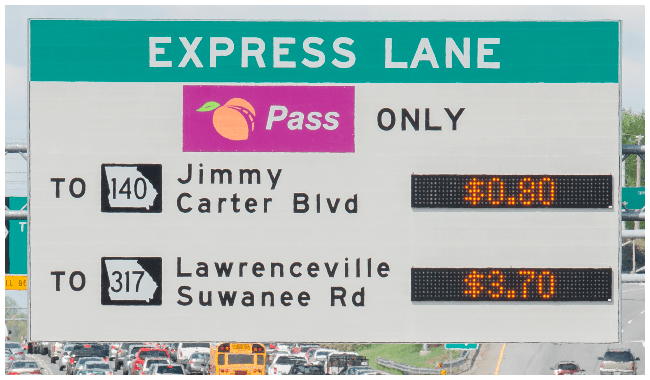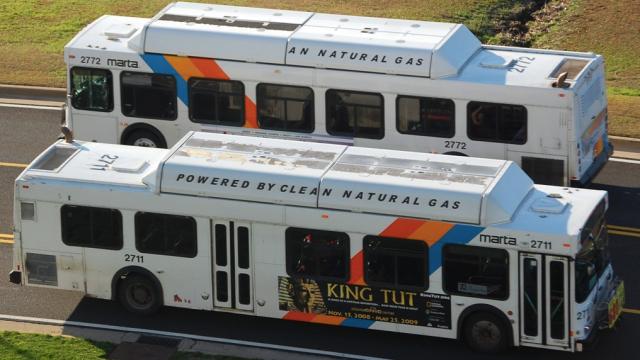There’s a running joke in many American cities: The only way to make public transportation truly work would be to pay people to ride it. In Atlanta, that’s kind of what a new pilot program is doing. For certain transit trips, passengers can now earn $US2 — but they can only use the money to pay tolls on a nearby highway. Is this the best/worst idea to provide congestion relief?
According to the Atlanta Journal-Constitution, the program was specifically conceived to alleviate the crushing gridlock on I-85, where even the high-occupancy vehicle (HOV) toll lanes which opened in 2011 have become a commuter’s nightmare. The city’s State Road and Tollway Authority (SRTA) is offering the transit plan in the hopes of getting at least some of those cars off the road during peak hours.
Here’s how the transit credit works: For every trip on the buses which travel the same routes as the express lanes, $US2 is credited to the commuter’s toll credit account (they will have to link their transit pass to their toll pass), with the potential to earn up to $US10 per month for six months. The maximum credit that can be earned through this particular pilot program is $US60.

Pricing posted on I-85’s express lanes. Drivers are charged to use the HOV lanes via a transponder installed in their windshield.
At first blush, the transit plan seems like a smart way to get people off the road and onto buses. But the maths doesn’t always pencil out. Like most HOV lanes, which have become popular in many cities, the tolls on the I-85 Express Lanes vary throughout the day according to capacity. Drivers can clearly see the current rate per mile posted on signage before making the decision to enter the lanes. The I-85 lanes have become so popular that tolls have been posted at up to $US8 each way on some days, making for a pretty pricey commute. The tolls aren’t always that high, of course, and not all the drivers are driving the entire 16-mile route. But if you ride transit to and from work for five days to earn the maximum $US10 per month, that might not do all that much to offset your commute for the other 17 work days of the month — if you’re always driving the farthest and during the most expensive times.
It might be worth it for some commuters. Say you pay an average of $US3.70 each way, the example in the image above, to get to and from work — that’s about $US160 per month (I’m estimating 22 work days per month). Ride the free transit five of those days and the credit would reduce what you pay monthly to around $US120 per month. But it’s really hard to quantify the savings with the HOV lanes: You can always choose not to take them if the rate is too high. However, monthly bus passes along the same route range from $US130 to $US180 depending on how far passengers need to travel. But you don’t get a discount on the bus fare if you’ve pre-paid for the month. How about giving bus-riders a better deal for already having their cars off the road?
The bigger issue here is the strange message this sends: Making driving the “reward” for riding a bus doesn’t actually provide the behavioural shift that’s needed to keep commuters boarding those buses, especially when the cost benefits are so minimal. A report from 2013 showed that amenities like park-and-ride lots along the same corridor were already doing a good job at attracting what are called “choice” riders on the transit routes. The real way to get more riders to take the bus is to improve service: More buses, more often, with better facilities at each end and better connections into the neighbourhoods in which they travel.
And that’s the troubling part about all of this — where all this money ends up going. On some HOV programs like this, at least part of the funds raised by tolls are used to pay for transit projects which can help alleviate congestion even more. In Atlanta, it’s kind of like a vicious cycle. The toll revenues go right back into the HOV program — to maintain the ever-crowding toll lane. [AJC via NextCity]
Picture: James Willamor
